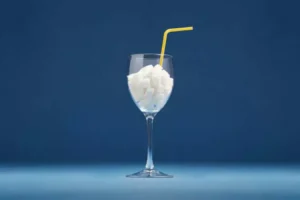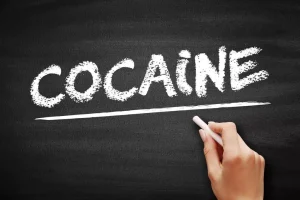
Don’t apply creams, salves or oils you use to treat your track marks or bruising until the injection wound has begun to close (a couple of hours after injecting) otherwise you might cause an infection. Treat missed shots (those that ended up somewhere other than in your vein) immediately with a warm water soak or compress to reduce the likelihood of irritation and abscess formation. Warmth will open the capillaries and bring disease-fighting white blood cells to the affected area. Once you think you’re in a vein, pull the plunger back to see if blood comes into the syringe. If so, and the blood is dark red and slow moving, you know that you’ve hit a vein. If no blood or only a very tiny amount of blood comes into the syringe when you pull back, you’re not in a vein and will have to untie your tourniquet, pull your needle out, and try again.
Physical Damage

This toxin is thought to cause the symptoms of cotton fever, but it is not something that causes a lasting effect in the body. Additionally, and quite dangerously, a variety of prescription drugs are also used this way. Most of these medications come in a pill or tablet form which requires users to crush and liquify the drug.
Why Do People Shoot Up Drugs?
- For example, opiates such as heroin can become physically addictive after only a few injections.
- Therefore, you must know how to tell if someone is shooting up to save a family or friend who might be suffering from IV drug use addiction.
- Abscesses can be treated by medical professionals but can lead to scarring, illness, and other serious complications if ignored.
- Additionally, certain drugs, especially those combined with heroin, are so toxic and potent that they can absorb through the skin.
- Track marks shed light on deeper issues that require immediate attention.
Untreated endocarditis is a dangerous condition and results in death without proper medical attention. Those who regularly inject drugs are at a higher risk of developing an infection at the injection site. Septic arthritis is a painful infection that can cause extreme discomfort and limit the mobility of the infected joint and surrounding area. As mentioned above, intravenous injection can cause local pain, swelling, or hardnessover injection sites, and possible anaphylaxis. Intravenous injection, with the fastestdrug effect on brain and the highest bioavailability, can relieve craving symptoms.

The Possible Mechanism behind Intravenous Drug Use
- This approach aids in the management of withdrawal symptoms and curbs cravings.
- The dangers of IV drug use include an increased risk of infection, permanent damage and raised risk of an overdose.
- Symptoms of endocarditis may develop quickly for some patients while developing more slowly for others.
- Just like any other disease, addiction is treatable with the help of professional healthcare specialists.
- Based on the CDC fact sheet, in the United States there are 1.2 million people withHIV infection and 20% of them are unaware of their infection21.
In addition, muscle-poppers are at high risk for abscess formation, especially if what they inject has any particles in it whatsoever. When muscle-popping, it is extremely important to inject only a solution that is as particle-free as possible. When injected, however, they can create severe and potentially life-threatening effects. The use of needles and the act of injecting substances into your body also creates a variety of risks, including infections, diseases and injuries. This overview covers the risks of IV drug use and how to find help for IV drug addiction.
What Is the Stigma That Surrounds Track Marks?
If left to heal, a collapsed vein may show improvement after the inflammation has gone down. A healed collapsed vein can function normally, with blood flowing through the vein once again. However, if IV drug use is continued in the same injection site, permanent vein collapse can occur. One of the most common symptoms of vein collapse is cold hands or feet due to reduced circulation.
- Arteries are located deeper in the body than veins and so are not visible as many of your veins are.
- Infections near injection sites can become severe and cause necrotizing fasciitis, also known as a “flesh-eating disease,” or cellulitis.
- Intravenous drug use poses significant health risks and complications that can have long-lasting consequences for an individual’s well-being.
- However, several viral infectious diseases are still transmitted between IV drug users, including hepatitis C (HCV), hepatitis B (HBV), and HIV/AIDS.
- Many individuals turn to drug use as a form of self-medication for underlying issues like depression, anxiety, or other mental illnesses.
- However, it’s not always straightforward to see if someone injects drugs.
AIDS was first reported within a small group of homosexual men with opportunisticinfections and Kaposi’s sarcoma17,18. The transmission pathwaywas identified as spreading through certain body fluids such as blood, semen, vaginalsecretions, and breast milk. Several preventive measures were implemented such as riskreduction programs, condom distribution, iv drug use and needle exchange programs. Since the lastdecade, the number of HIV infections has increased rapidly, and the public’s concern hasbeen aroused. According to a UNAIDS estimate, in 2011, 34.2 million persons were infectedby HIV, as compared with 29.1 million in 2001, and 2.5 million persons were newly infectedand 1.7 million persons died19.
- More effectively identifying those at a high risk of HIVinfection is the key.
- People engaged in IV drug use typically end up requiring more serious medical attention than snorters.
- Because speed is often cut with such dangerous chemicals, it is very important not to miss your shot.
What Are Track Marks and What Do They Look Like?

